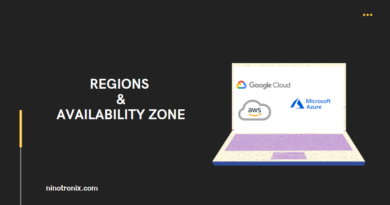AWS Identity and Access Management (IAM): Securing Your Resources
AWS Identity and Access Management (IAM) is a web service that enables users to securely control access to AWS resources. IAM enables users to create and manage AWS users and groups, and to assign permissions to users and groups to access specific AWS resources.
IAM Roles and Users
IAM Roles enable users to delegate permissions to services that run on AWS resources. Users can create roles that define a set of permissions that a service can use to access AWS resources. Users can then assign the role to an AWS service or an EC2 instance, allowing the service or instance to use the permissions defined by the role.
IAM Users enable users to manage access to AWS resources for individual users. Users can create IAM users and assign them permissions to access specific AWS resources. IAM users are not tied to a specific physical user, so they can be assigned to multiple physical users.
IAM Policies
IAM Policies define permissions that control access to AWS resources. Users can create policies that define a set of permissions that are assigned to a user or group. IAM policies can be attached to a user or group, allowing the user or group to access specific AWS resources.
IAM policies are written in JSON format and consist of a set of statements. Each statement defines a set of permissions that are granted or denied to a user or group. Users can define conditions that must be met for a statement to be applied.
IAM Access Control Lists (ACLs)
IAM Access Control Lists (ACLs) enable users to specify access control rules for individual AWS resources. Users can create ACLs that define a set of permissions that are applied to an individual AWS resource. Users can specify which users and groups have access to the resource and the permissions that are granted.
IAM Access Control Lists can be used to control access to a variety of AWS resources, including S3 buckets, SQS queues, and SNS topics.
IAM Multi-Factor Authentication (MFA)
IAM Multi-Factor Authentication (MFA) enables users to add an additional layer of security to their AWS accounts. Users can enable MFA on their AWS accounts, requiring a second authentication factor in addition to their username and password.
IAM MFA can be used with a variety of authentication factors, including a hardware token or a virtual MFA device. Users can configure their MFA settings through the IAM console or using the AWS CLI.
IAM Security Best Practices
IAM provides a variety of security features to help users secure their AWS resources. Some best practices to follow when using IAM include:
- Use strong passwords: Users should create strong passwords and use a password manager to keep track of them.
- Enable MFA: Users should enable MFA on their AWS accounts to add an additional layer of security.
- Follow the principle of least privilege: Users should grant permissions to users and groups based on the minimum necessary permissions required to perform a task.
- Use IAM Roles: Users should use IAM Roles to delegate permissions to services and EC2 instances.
- Use IAM Policies: Users should use IAM Policies to control access to AWS resources.
- Regularly review permissions: Users should regularly review permissions to ensure that they are still necessary and appropriate.
Conclusion
In conclusion, AWS Identity and Access Management (IAM) is a web service that enables users to securely control access to AWS resources. IAM enables users to create and manage AWS users and groups, and to assign permissions to users and groups to access specific AWS resources. IAM Roles enable users to delegate permissions to services that run on AWS resources, while IAM Users enable users to manage access to AWS resources for individual users. IAM Policies define permissions that control access to AWS resources, and IAM Access Control Lists enable users to specify access control rules for individual AWS resources.




